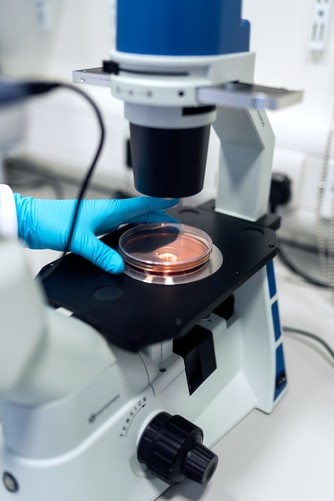Mapping the Human Reference Interactome to Develop a Better Understanding of Disease
By Patrick Jones
Photo : Unsplash
Between 1990 and 2003, the Human Genome Project provided a veritable map of all of the genes that make up the human genetic identity. This map, known as the genome, allows detailed insight into the codes necessary to construct a human cell. However, within each cell is a still more intricate network of countless interactions that occur on a molecular level, enabling the cell to perform its proper function.
When Things Go Wrong
Molecular interactions occur every second of every day, within each of the billions of cells that make up the human body. Many of them serve to sustain life, performing one or more critical duties that enable a cell to serve its purpose within the body. However, when something goes awry within these interactions, the function can become altered, and disease can occur.
While the human genome mapped out the genes that code for these interactions, researchers found that it is just as important to understand which interactions sustain health and which lead to disease. As the cell's most active component, gene-encoded proteins serve as the most frequent participator in molecular interactions. Knowing the importance of these molecular interactions inspired a team of researchers to begin building a reference map that describes protein-protein interactions.
HuRI Map of Molecular Interactions
Beginning in the mid-1990s, over 80 researchers from the US, Canada, Israel, France, Spain, and Belgium collaborated to build a map of the human proteome. This map is known as the Human Reference Interactome, or HuRI, and it maps 8,275 proteins that participate in 52,569 interactions. While other human proteome maps list and describe as many proteins as possible, this map specifically references gene-encoded proteins involved in protein-protein interactions.
Through protein interrogation, the HuRI was able to increase the amount of mapped interactions vastly. To do this, researchers created co-expressed proteins within yeast cells that mirrored nearly every protein in the human proteome and monitored yeast cell growth to identify potential interactions. After an astounding three billion tests, HuRI's map more than tripled the researchers' knowledge of the human interactome, providing an easily accessible, open-source map available to other scientists.
Why HuRI Is So Important
The majority of a cell's molecular interactions take place between proteins, including disease-causing interactions. However, researchers had definitive proof of a very small subset of this vast array of interactions. With HuRI's completion, researchers can use the interactome's information to predict the nature of unknown proteins and the purpose of their interactions.
Known as the "guilt by association principle," researchers can accurately predict protein function based on current interaction data. In other words, if two proteins are structurally similar and have similar interaction partners, their structure and interactions are very likely the cause of a similar biological process. By identifying a protein's interaction partners, HuRI has identified important new functions for little-known proteins in essential cell activities such as cellular transport and cell death.
Future Implications
While the current HuRI has mapped just 2 to 11% of all protein-protein interactions, researchers are already utilizing it to study the molecular interactions that lead to disease. In combination with genome sequencing, HuRI's interactome information can reveal not only which genes lead to the expression of a disease but the particular changes in protein-protein interactions that reveal its root cause. As a result, further study may lead to the development of therapeutic compounds that may slow or halt these interactions, treating disease symptoms or even preventing disease altogether.
Identifying the protein interactions and networks behind disease mechanisms could help reveal new therapeutic targets for a wide range of fatal diseases like cancer, Alzheimer's Disease, and even infectious diseases. As the scientific community begins this new era of investigation, HuRI will continue to serve as a critical resource.
* This is a contributed article and this content does not necessarily represent the views of universityherald.com









